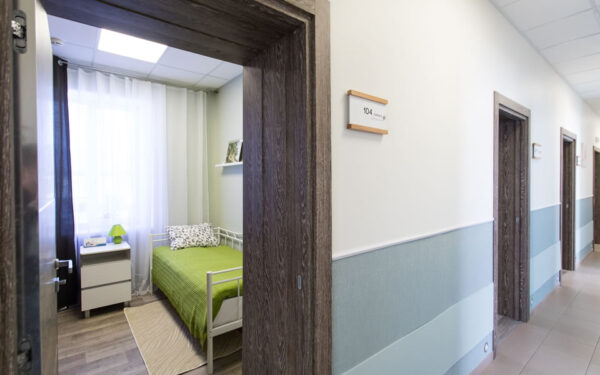Tips on Maintaining Your Hospital’s Tax-Exempt Status
Many hospital systems receive the benefit of tax exemption. The provision of health care services is not, in itself, an activity which is automatically eligible for tax exemption. A hospital organization must demonstrate that it operates to promote the health of a class of persons broad enough to benefit the community. What is commonly known as the “Community Benefit Standard” was outlined in Rev. Rul. 69-545. Rev. Rul 69-545 explains, “To qualify for exemption from Federal income tax under section 501(c)(3) of the Code, a nonprofit hospital must be organized and operated exclusively in furtherance of some purpose considered ‘charitable’ in the generally accepted legal sense of that term, and the hospital may not be operated, directly or indirectly, for the benefit of private interests.”
When the IRS redesigned Form 990 in 2008, Schedule H was added to attempt to quantify the amount of charity care a hospital provides. There are two main buckets in calculating the charity care percentage: financial assistance and means-tested government programs; and other benefits. Financial assistance and means-tested government programs include financial assistance (i.e., charity care), Medicaid, and other means-tested programs. Other benefits include community health improvement services, health professions education, subsidized health services, research, and cash/in-kind contributions. When this was originally published, the expectation was the IRS would gather data on the charity care percentages reported by different types of hospitals and provide metrics. One thought was that the IRS would question organizations with under 5% in charity care.
Shortly after the new Form 990, Schedule H was published, the Affordable Care Act enacted Section 501(r) of the Internal Revenue Code, which added significant requirements for a hospital to maintain its tax-exempt status. These requirements fall into four main sections:
- Community Health Needs Assessment (CHNA).
- Financial assistance and emergency medical care policy.
- Limitation on charges.
- Billings and collections policy.
With the enactment of IRC Section 501(r) requirements, the reporting for community benefit on line 7 of Schedule H seemed to hold less importance.
Fast forward to 2020, which brought the COVID-19 crisis. ICU units were at capacity, and staffing and supplies were both in short supply and increasing in cost. Ancillary services, such as ambulatory surgery services, were curtailed by government shutdowns. The federal government allocated over $100 billion to hospitals through the Provider Relief Fund. In speaking to many clients, this money was needed to pay for staffing, supplies, and other items to keep the organization serving the community. Outside the hospital community, this was not necessarily the perception.
On April 28, 2023, the House Ways and Means Committee convened an Oversight Hearing on non-profit hospitals. Almost 60% of hospitals in the United States are non-profit hospitals, especially essential in serving rural communities. The committee is considering whether the amount of community benefit is sufficient to support the enormous tax benefit provided to tax-exempt organizations. Stories such as aggressive billing practices and high executive compensation in hospitals continue to run in the media. The committee report cited during the hearing estimates the potential tax benefit of tax exemption for hospitals is approximately $28 billion.
With $28 billion in estimated tax savings and $100 billion in COVID-19 government funding, have tax-exempt organizations kept pace with their charity care and community benefit? Are they giving back to their communities? In speaking with tax-exempt hospitals, organizations feel they are working hard to support their communities. The cost of supplies and compensation has increased, and all revenue is needed to provide care to those with and without means in the community. Additionally, the House Ways and Means Committee is considering the compensation given to executives, aggressive collection practices, and, more importantly, that the amount of community benefit reported on Form 990, Schedule H has not substantially changed from when reporting began in 2008. Should community benefit percentages have gone up if the hospital was given extra COVID funding? There is also concern about the lack of uniformity in the method to calculate the charitable care percentage.
Besides the community benefit figure reported on Schedule H, Part 1, Line 7, there are also community-building activities reported on Schedule H, Part II. While these activities do not increase a hospital’s community benefit figure, they do provide additional information on how the organization is supporting the community in such areas as physical improvements and housing, economic development, community support, environmental improvements, leadership development and training for community members, coalition building, community health improvement advocacy, workforce development, and other activities that protect or improve the community’s health or safety. This area is often overlooked on the form because the time involved in quantifying the information is significant, and it does not impact the community benefit percentage. It may be worth showing the depth of services your hospital provides and your commitment to the community.
Now is the time to scrub your community benefit analysis to make sure you are maximizing your community benefit percentage. The calculation of means-tested programs is mathematical. However, time should be taken to analyze it. The best approach is to meet with some individuals from operations, development, and finance to think through activities that meet the community benefit criteria. Some items to consider:
- Could your previously reported community-building activities be considered community health improvement services?
- Have you reviewed your subsidized health services? Care should be given to determine both departments that generate a loss and a need in the community to maintain the activity.
- Do you have any sort of health professions education? Do you have student nurses, residents, student therapists, etc.?
- Are your employees participating in any charitable activities? Have you quantified the time involved?
- Does your organization make any charitable donations?
With the increased scrutiny of the amount of community benefit and charitable care provided compared to the tax benefit received, your organization should make sure it is quantifying your total community benefit.







